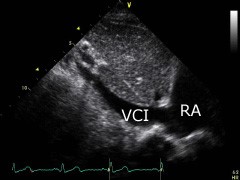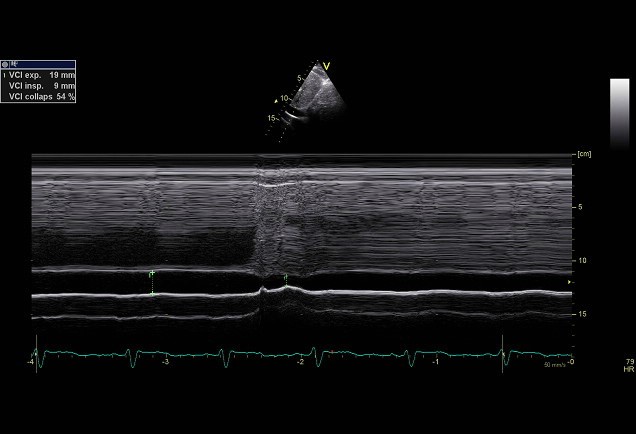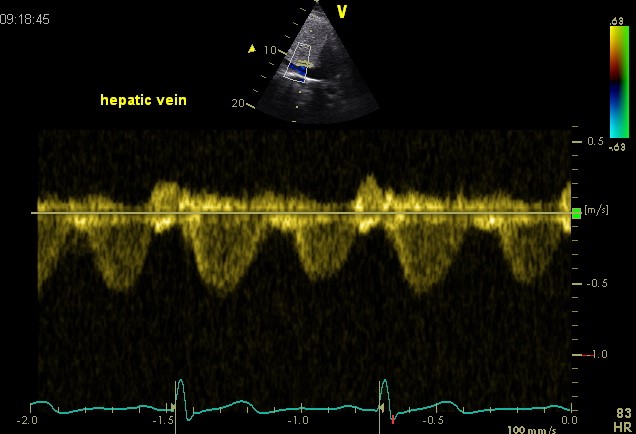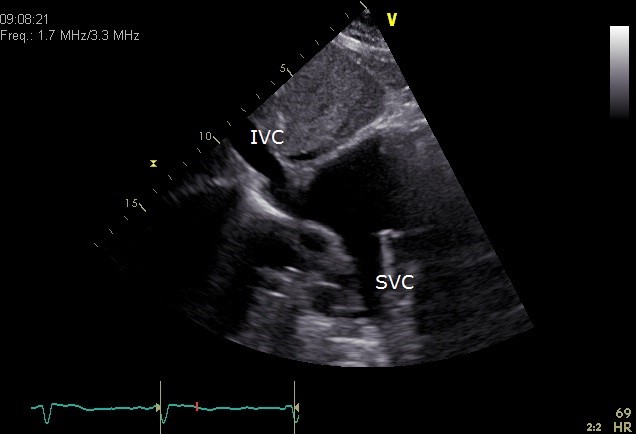Inferior vena cava (IVC)
The inferior vena cava (IVC) is the body’s largest vein that provides the back-flow of blood to the heart. This vein contains deoxygenated blood returning from the tissues in the lower part of the body (systemic circulation). The inferior vena cava can be best appreciated from a subcostal view. The IVC can be compressed by surrounding tissues such as tumours obstructing the return of blood leading to congestion. This is called the IVC-Syndrome.

IVC subcostal view



